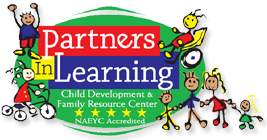Understanding and Coping with the Behaviors of Children with Autism
1) Get to know your child and understand their specific needs and difficulties. Know whether the child is sensitive to light, sound, people, etc. Figure out whether the child benefits from sensory input. Get to know your child’s typical symptoms and dangerous behaviors.
2) Start with small goals and expectations (e.g., sitting still for 2 minutes during group time) and build on them based on successes (e.g., sitting still for 10 minutes) until the entire activity can be accomplished (e.g., sitting during entire length of group time)
3) Modify the classroom/home according to the safety of your child (e.g., bolt shelves to wall; put door knob cover on door). Keep in mind that children with autism tend to enjoy climbing furniture, opening and closing cabinets, etc. Autistic children do not have a sense of fear like other children, so we must be aware of all unsafe aspects of our classrooms.
4) Learn about sensory input and while observing your child, try to understand whether the “difficult” behavior is occurring because of too much sensory input or not enough sensory input.
5) If your child is behaving “badly” during high sensory activities and events (e.g., during field trips or while dancing with loud music, etc.), try to avoid these situations or modify the level of sensation. Sensory toys can also be used when manipulation of these events is not an option.
 |
| Standing on furniture |
 |
| "Let's go outside so we can jump!" |
6) On the other hand, if your child is climbing, jumping off furniture, spinning around, or running into furniture, they probably do not have enough sensory input. Sensory integration, such as bear hugs and weighted vests, is a good option for increasing sensory input.
7) When possible, encourage appropriate behavior as a substitute for inappropriate behavior. When your child is climbing furniture, take them outside to climb on playground equipment in order to redirect and teach when climbing is appropriate.
8) When your child successfully accomplishes something, such as saying a complete phrase or kicking a ball, exaggerate your excitement in order to show your child you are happy with what they just did; this encourages positive reinforcement and increases the liklihood that the behavior will occur again in the future.
9) Keep in mind that children with autism typically do not misbehave intentionally, their behaviors are most likely due to external factors, such as their environment, the amount of sensory input they are experiencing, or perhaps they have fallen out of their normal routine.
8) Last but not least, encourage the abilities of your child. Recognize that children with autism need to be modeled the correct behavior and will succeed best when they have caregivers who are knowledgeable of their symptoms and are willing to get to know the child as an individual.
Katherine Zink, Community Inclusion Assistant


No comments:
Post a Comment